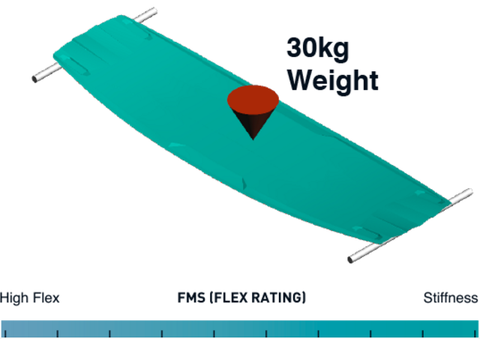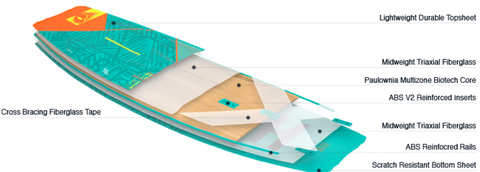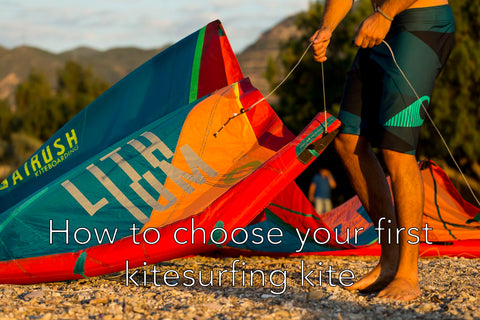
5 Things to help you choose your twintip kiteboard
New to kitesurfing? Looking to buy your first kiteboard?
Want to take your kitesurfing to the next level? Jump even higher?
Or simply lost your board in those extreme condition you like to ride in?
These tips are brought to you by Alex Pastor & his team, after spending a lot of hours on the water and working with the Airush Kiteboarding design team for the past 8 years, to create his pro model kiteboard, the freestyle machine Airush Livewire Team.
If you want to change or buy a new kite board, these are the 5 things you need to consider when buying a twintip kite board:
Alex explains more in depth about boards
Kiteboard Size
Yes, size matters, a lot. When it comes to kiteboard, you shouldn't be afraid of big sizes, of course not over 142-5 cm, unless you're a complete beginner or riding in lightwind conditions. The 135 cm days are over, it used to be the most popular size for an average customer (180 cm tall), but in the past couple of years we've found that for this height, a 140 cm board will suit you better. If you're in 170 cm range you would be looking at 138cm kiteboard size, and if you're in 150-169 cm you would consider even a smaller board.
You would ask why is that?
Obviously the more surface you have under your feet, the more stable your riding and landings will be. Of course the bigger boards will be more bulky, a little bit harder to move or manoeuvre, but all the modern boards in 140-142 size are able to move quick enough, due to other aspects that we'll talk about later.
Twintip Kiteboard Size Chart
| Rider Height | Kite Board Size |
| <140cm | 120-128cm |
| 140-160cm | 128-135cm |
| 160-170cm | 131-138cm |
| 170-180cm | 135-142cm |
| 180-190cm | 138-145cm |
| >190cm | 140cm + |
The weight also plays into consideration, if you're a bit heavier then you would like to go one or two sizes up. Also the width of the board is proportional to the length, the longer the board the wider it will be. Width is not something you should worry about as kite brands design the boards for optimal surface area and performance.
Flex

Airush has introduced the FMS Rating which quantifies how much the twintip flexes, because the good old "feel" test is very subjective and can cause some confusion. Basically it means:
Lower number = More flexible
Bigger number = Stiffer
What does it mean for the riders?
More flexible kite boards can absorb the chop better than the stiff boards, which makes it easier on your joints and makes your freeride sessions more enjoyable, that's why beginners appreciate more flexible kiteboards.
Medium flex boards like the Airush Apex, suits the intermediate level kiters, who like a comfortable board, but also with a decent amount of pop. So if you like to do a bit of everything or mostly big air, this is what you're looking for.
Stiff boards are mostly used for freestyle and wakestyle, to get the most explosive pop possible. If you're dedicated to improve your unhooked level then you would like to consider a stiff board.
Most of the brands have a table or chart where it shows what the boards are for, an example (Airush Apex):

Rocker
Rocker is the curvature of the board.
Lower rocker helps to plan (get speed) easier, especially in lightwind conditions. On a flatter board you have more chance to dive the front when landing a jump. Flatter rocker is better for beginners, because it easier to go upwind for those with less experience.
Higher rocker helps to create extra pop in powered moves, aids the high speed landings from tricks and adds control while riding with boots. It performs really well in overpowered conditions as the curvature is slowing down the board.


Weight (Construction)
Most of the kiteboards have a wood core, Paulownia to be exact, as it's light and strong. The wood core is the main component and then other materials/layers are added like fiber-glass and other composites to make the board.

Some of the boards are available with the grind base, that can be used for sliders and kickers or even for wakeboarding. Also it makes the bottom of board more durable, so it lasts longer when you ride over the sand or hit some rocks/reefs.
High performing boards are often found in carbon construction, as carbon is strong and light material, it can reduce the weight of the board and/or increase stiffness. Carbon makes the board more responsive, so the board can have more pop without adding stiffness.

Channels
Channels are grooves on the tips of the kiteboard or along side the edges, that give extra grip, you can have smaller fins, which will be more forgiving in landings. Channels are mostly important for advanced freestyle/wakestyle riders. Another important aspect of the channels that they allow you to land more stable and preventing sliding forward or backwards.

Love this how to choose kiteboard guide?
Why not to check our other kitesurfing guides
Comments
Awesome video and article folks! Thanks!




